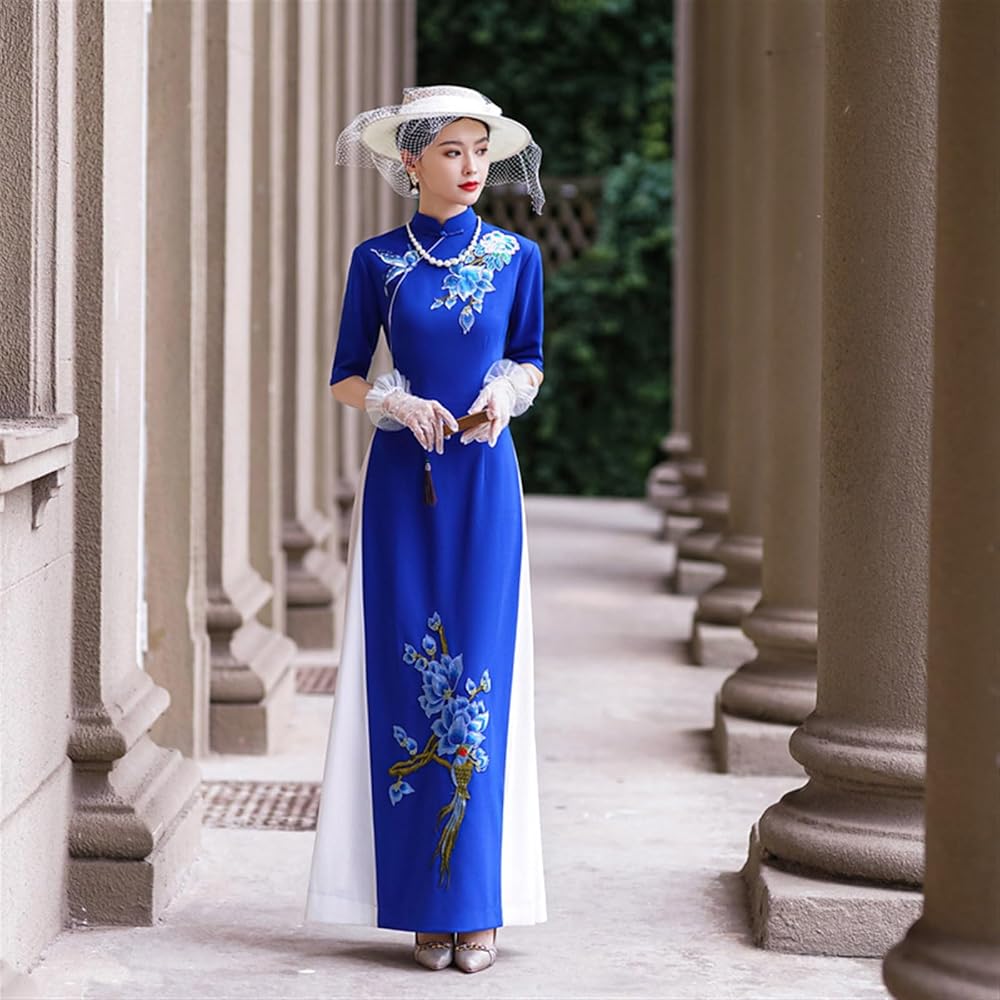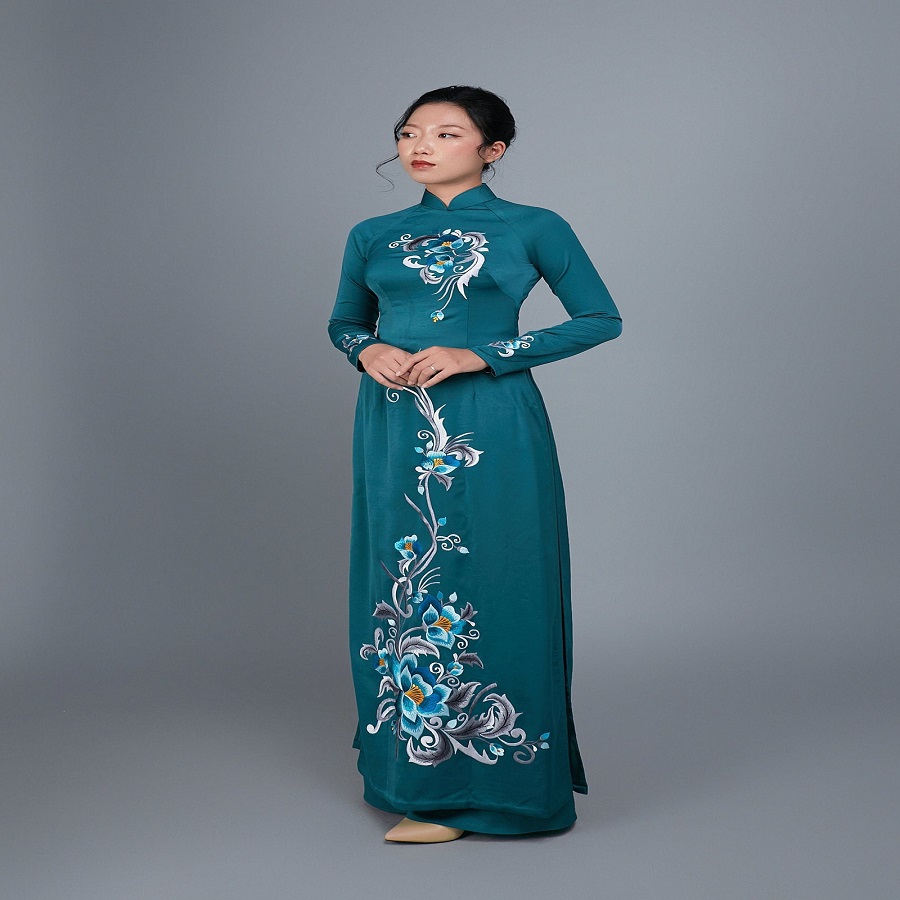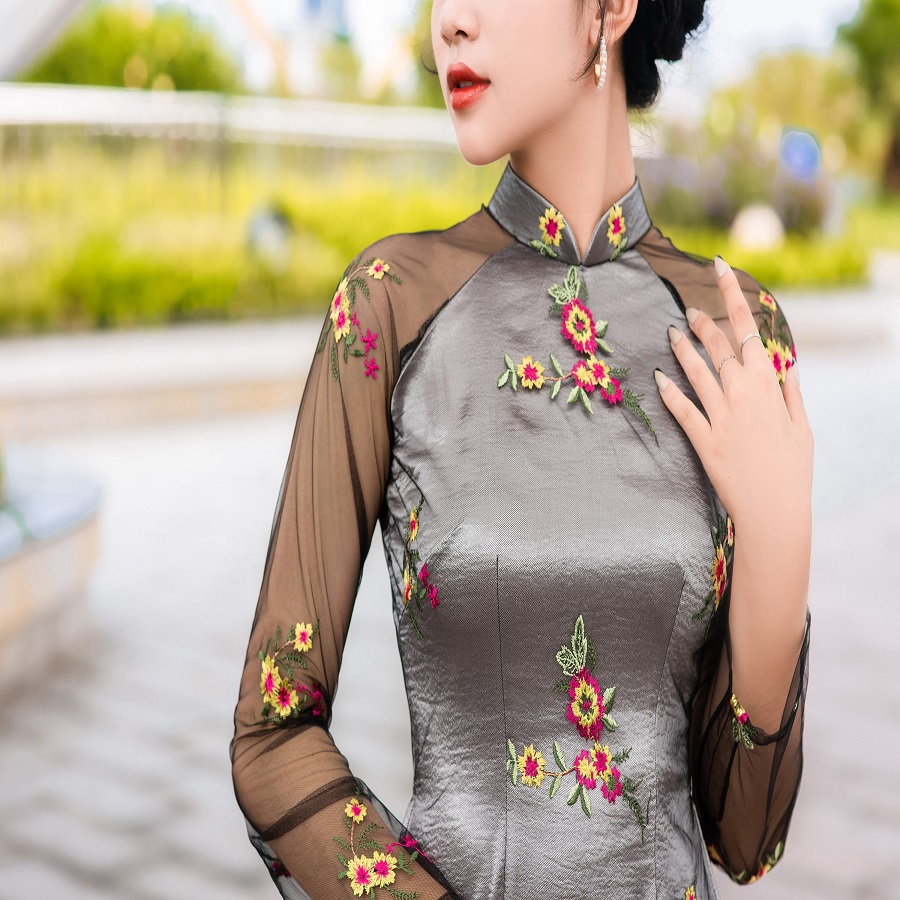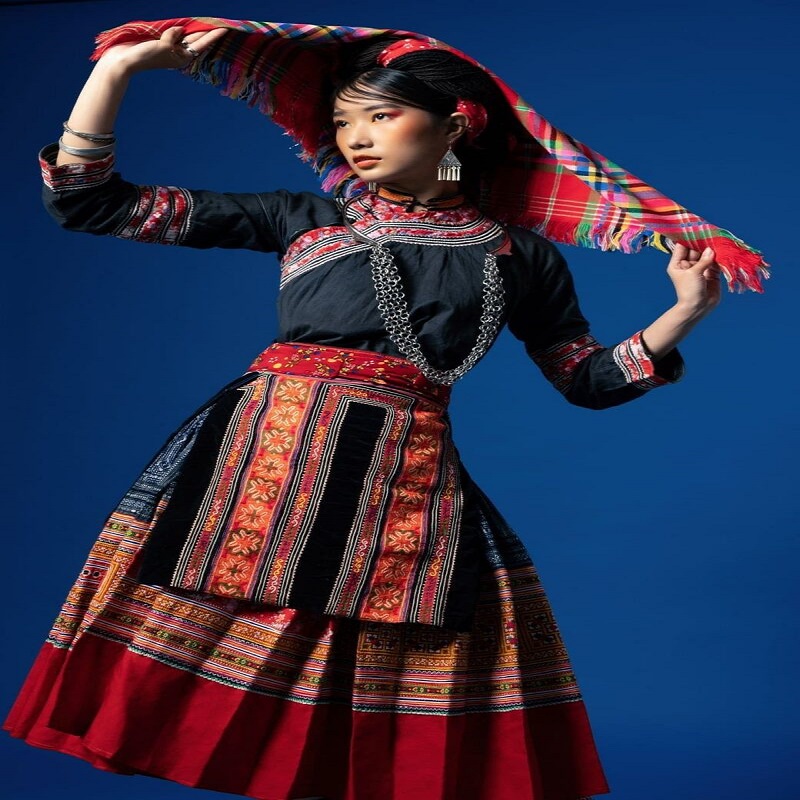Introduction
Vietnamese clothing, often characterized by its intricate designs, vibrant colors, and cultural symbolism, serves as a rich tapestry reflecting the history and identity of the Vietnamese people. From the iconic áo dài to the everyday wear of traditional textiles, Vietnamese attire is deeply intertwined with the nation’s heritage, spirituality, and social values. In an age of globalization, these traditional garments are not only preserving cultural identity but also adapting to contemporary trends and influences. This essay delves into the cultural significance of Vietnamese clothing and examines how modern adaptations are shaping identity in a globalized world.
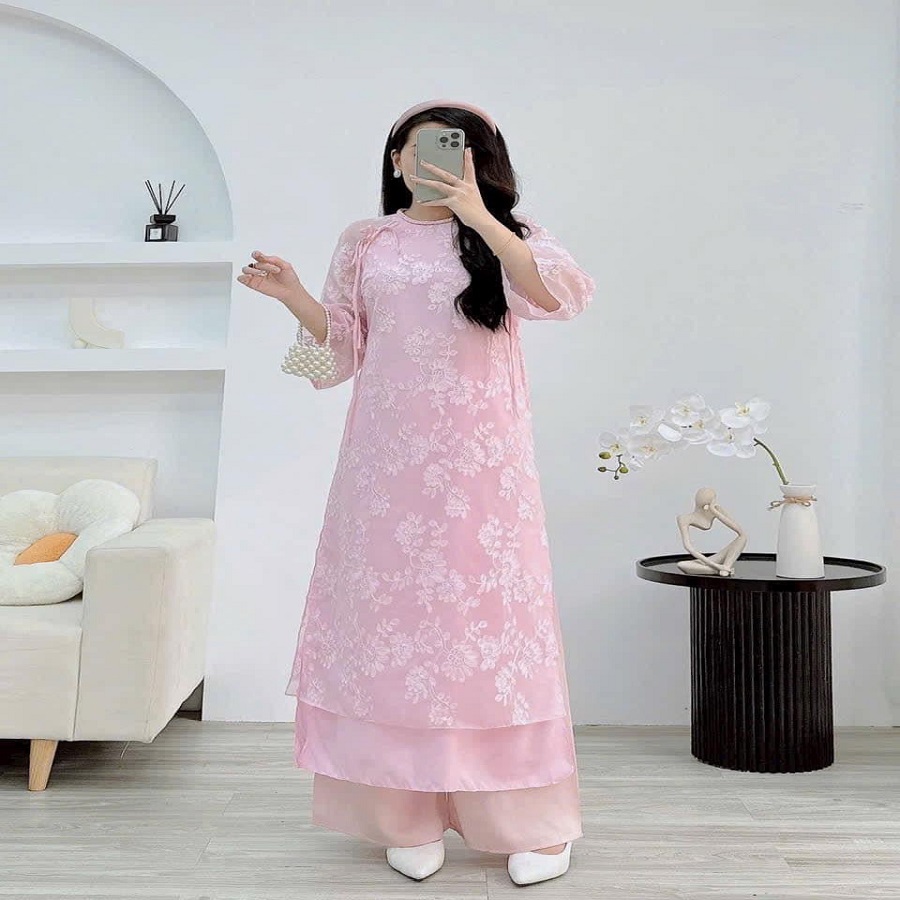 Historical Context of Vietnamese Clothing
Historical Context of Vietnamese Clothing
The history of Vietnamese clothing can be traced back several thousand years, with each era leaving its mark on the textiles and designs that characterize the nation today. Early Vietnamese garments were heavily influenced by the cultures of neighboring countries such as China, Champa, and later, Western nations. However, a distinct Vietnamese identity emerged, particularly during the Nguyễn Dynasty (1802-1945), when the áo dài was formalized as a symbol of Vietnamese femininity and grace.
Historically, the áo dài—a fitted tunic worn over loose trousers—was considered a dress of not just functionality but also symbolism. It came to represent the beauty, dignity, and aspirations of Vietnamese women, often adorned with patterns and colors that amplified the wearer’s individuality and social status. The traditional designs and fabrics, such as silk and brocade, began to reflect deeper cultural narratives, embodying the local craftsmanship and artistry that have been passed down through generations.
The Cultural Significance of Traditional Fabrics
The fabrics used in Vietnamese clothing play a pivotal role in expressing cultural identity. Traditional textiles such as silk, hemp, and cotton are deeply embedded in local culture. Each fabric carries specific meanings and is often associated with particular regions, festivals, or life milestones. For instance, silk is revered for its softness and luster and is often used during weddings and celebrations, symbolizing wealth and prosperity.
Moreover, the colors and patterns in Vietnamese attire are laden with cultural significance. Red, for instance, is associated with good fortune and happiness, making it a popular choice for celebration attire, while black may symbolize power and sophistication. Even embroidery and prints often tell stories from local folklore or represent natural elements that emphasize the connection of the Vietnamese people to their surroundings.
Modern Adaptations of Vietnamese Attire
As Vietnam becomes increasingly connected to the global economy and culture. Traditional clothing is undergoing adaptations that merge historical significance with modern fashion sensibilities. Designers today are creatively reinterpreting traditional textiles and forms. Allowing a new generation to embrace their heritage while integrating contemporary trends. The áo dài, which was once exclusively reserved for formal occasions, has now made its way into the world of everyday fashion and high-profile events.
For instance, many fashion designers are experimenting with fabric combinations, colors, and silhouettes to create hybrids that maintain the essence of the áo dài while appealing to modern aesthetics. The use of neon colors, unconventional patterns, and even Western sartorial elements such as off-shoulder designs are becoming increasingly popular. This fusion not only showcases a commitment to preserving tradition but also prompts dialogue on what it means to be Vietnamese in a rapidly changing world.
Vietnamese Fashion on the Global Stage
Globalization has prompted Vietnamese clothing to find its niche in international fashion. Participation in global fashion weeks and collaborations with international designers have put Vietnamese textiles and design techniques on the world map. For example, exhibitions spotlighting traditional Vietnamese textiles have garnered attention in major design capitals. Enabling a cross-cultural exchange as international designers explore Vietnamese fabrics and motifs in their collections.
Additionally, the rise of social media platforms has allowed traditional garments to transcend geographical boundaries. Influencers and fashion enthusiasts are using these platforms to showcase the beauty of Vietnamese attire, sparking interest and appreciation for its uniqueness. This visibility not only contributes to local pride but also influences modern interpretations of traditional designs, fostering a sense of community among young Vietnamese artisans and entrepreneurs.
In navigating the complexities of cultural identity, young Vietnamese fashion designers are striving to strike a balance between traditional roots and modern influences. By blending conventional designs with contemporary elements, they are creating clothing that resonates with youth while honoring their heritage. This process not only serves as a means of cultural expression but also fosters a sense of pride in national identity amidst globalization.
The reinterpretation and adaptation of traditional Vietnamese clothing cultivate a space where heritage and modernity coexist. For many, wearing traditional attire in a modern context becomes a form of statement—a way to assert identity, celebrate heritage, and resist the homogenizing forces of global consumer culture.
Ancient Vietnamese Fashion
The Origins of Traditional Attire
The earliest records of Vietnamese clothing date back thousands of years. Highlighting the influence of indigenous tribes and neighboring cultures, including those from China and India. Royal garments of ancient dynasties, such as the Ly, Tran. And Nguyen, were characterized by their intricate designs and symbolic meanings.
For instance, the traditional attire for women, the ao dai, can trace its roots to ancient garments, evolving over centuries into the elegant dress recognized today. In royal courts, attire was not merely a matter of fashion; it conveyed power, status, and allegiance to the emperor. The fabric, color, and embroidery used in garments often indicated the wearer’s rank and role within the court.
The Role of Nature and Functionality
In rural Vietnam, clothing was also influenced by the practicality required for farming and daily labor. Traditional garments, often made from cotton or silk, were designed to protect the body from the elements while allowing ease of movement. Colors and patterns often mirrored the beauty of Vietnam’s natural landscapes, with earthy tones and vibrant hues used to represent various regions and ethnic groups.
The Colonial Era and Its Impact
French Colonial Influence
The late 19th and early 20th centuries saw Vietnam come under French colonial rule, significantly impacting local fashion. The introduction of Western styles led to a hybridization of traditional Vietnamese clothing. While the ao dai remained popular, it began to adopt elements from European fashion, such as fitted bodices and bustles.
During this era, clothing became a medium for both resistance and identity. While colonial authority sought to impose Western norms, many Vietnamese women began reclaiming their cultural identity through fashion, finding pride in their traditional garments even as they incorporated Western influences.
Post-Colonial Developments
The Rise of Nationalism
After gaining independence in the mid-20th century, Vietnam witnessed a resurgence of national pride. Which was reflected in the revival of traditional fashion. The ao dai in particular saw a renaissance, with its design evolving to embody the spirit of modern patriotism. Bright colors, floral patterns, and elegant silhouettes became symbols of Vietnamese beauty and resilience.
War and Its Aftermath
The Vietnam War brought significant upheaval, leading to changes in societal roles and expectations, particularly for women. Post-war, the economy struggled, leading to a period where practicality became more important than fashion. However, the resilience of the Vietnamese people meant that creativity flourished. With individuals finding ways to express their identities despite socio-economic challenges.
Contemporary Fashion Trends
Globalization and Modern Influences
With the advent of globalization in the late 20th and early 21st centuries. Vietnamese fashion began to embrace diverse influences from around the world. Designers began experimenting with fabric, form, and style, merging traditional aesthetics with contemporary silhouettes. The modern ao dai, for example, is often seen in bold prints and diverse materials, appealing to younger generations.
Social media platforms have played a crucial role in this evolution. Allowing local designers to showcase their work to a global audience. This exposure has fostered a vibrant fashion scene, with events like Vietnam Fashion Week celebrating both established and emerging designers.
Sustainable Fashion and Cultural Preservation
As the global conversation shifts towards sustainability, many Vietnamese designers are focusing on eco-friendly materials and traditional craftsmanship. Efforts to promote the use of indigenous fabrics, dyes. And techniques reflect a commitment to preserving heritage while meeting contemporary demands. This movement not only supports local artisans. But also emphasizes the importance of cultural identity in the face of rapid globalization.
Contemporary Streetwear
Urban fashion has also gained traction among the youth, with streetwear trends blending traditional motifs with contemporary aesthetics. Local brands are infusing street culture with elements of Vietnamese identity, creating a unique style that resonates with young people. Traditional garments are being reimagined, with hybrid styles that consist of jackets. Oversized tees, and sneakers paired with the classic ao dai.
Conclusion
The cultural significance of Vietnamese clothing(ベトナムの服) extends far beyond mere aesthetics; it encapsulates history, identity, and artistry. As traditional fabrics and designs continue to evolve through modern adaptations. Vietnamese clothing remains a powerful medium for expression in a globalized world. This ongoing dynamic reflects a broader narrative of cultural preservation and innovation. Allowing future generations to appreciate their heritage while navigating the complexities of modern society. In this way, the evolution of Vietnamese clothing not only shapes personal and collective identities. But also weaves a rich narrative of cultural resilience in the tapestry of global diversity.
